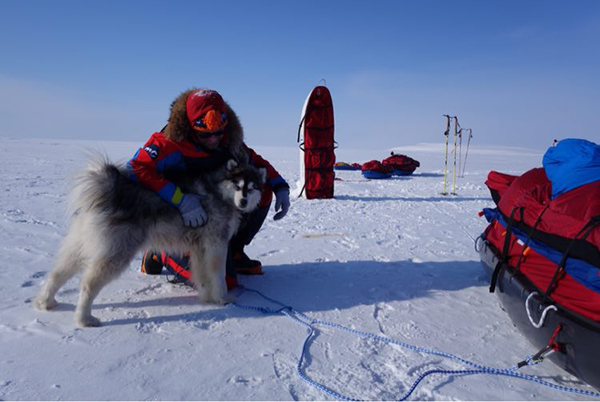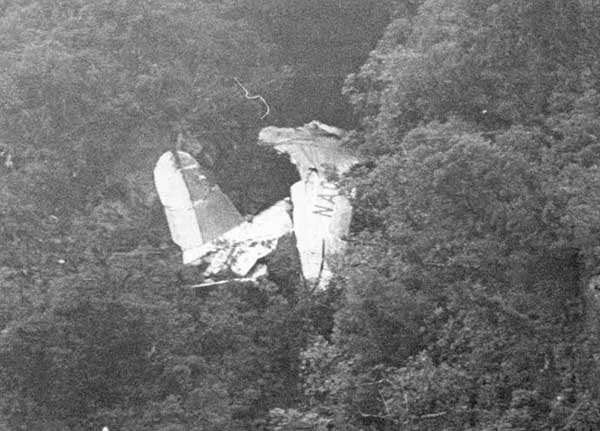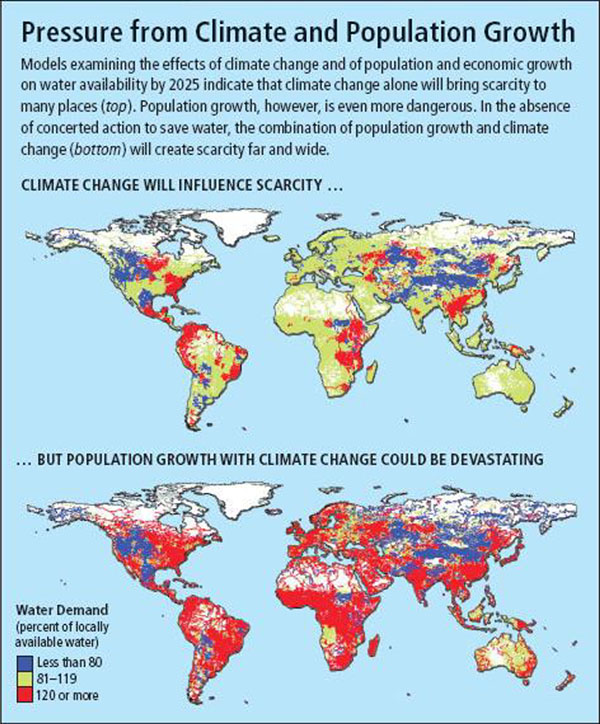Climate inaction and gratuitous risk-taking adventure tourism

Heroic Misadventure: Veteran Arctic ice researchers Marc Cornelissen and Philip de Roo have drowned while investigating what was thought would be the ‘Last Ice Area’—that which was most resilient to global warming, and where summer sea ice might hold out for decades, even as rest of the Arctic sea ice melts. In their last communication, Cornelissen said it was so warm they could not ski in their polar outfits and had stripped down to their underwear. ‘We think we see thin ice in front of us, which is quite interesting. We are going to research some more of that if we can.’ Pictured is the expedition husky, Kimnick, who has been rescued, but due to blizzard conditions since, the researchers’ bodies have not been located from the open water where personal items have been seen floating. image Cold Facts
From Mount Erebus to Carterton, Aotearoa has accumulated an appalling air-crash record. While pilot error was found to be the cause of the latter disaster, the country’s risk-taking tourism culture is endemic and stretches a long way back.
In the era before the main trunk railway line, the Whanganui River formed part of the main highway, a three-day journey in itself. Riverboat skippers were highly skilled, and tourists were provided plenty of thrills in the naphtha-powered craft that navigated the rapids in the most dramatic middle third of the journey. Particular kudos accrued to the skippers who braved the highest-recorded floods.
It took the loss of the 8948-ton Wahine and 52 lives, in 1968, to extinguish a similar culture amongst the Cook Strait ferry captains—operating, regardless of how extreme the conditions. As in Carterton in 2012, and in Fiordland in 1999, habitual risk-taking by adventure-tourism operators was reported but not acted upon. Aside from the obvious human and economic cost, the cheap-thrills risk-taking culture is selling Aotearoa and its tourist potential tragically short, and is no more legitimate than the line that suckered the country into the establishment of casinos in the 1990s—the specious argument that tourism demanded these activities.
It is as easy to see how the pilots of scenic-flight aircraft and hot-air balloons could become addicted to the adrenalin of skipping over mountain passes, over rivers, and, it is not unreasonable to suppose, high-voltage power lines. What is inexplicable is that reports of such serial unprofessional flying would be less-than-rigorously followed up by the Civil Aviation Authority. Except that this is exactly the behaviour of governments worldwide when faced with, since at least 1988, warnings by climate scientists that continued emissions of anthropogenic greenhouse gases posed the risk of dangerous, or even runaway, global warming, and guaranteed species loss, ocean acidification and disruptive sea-level rise.

Casinos Con Kiwis Not Tourists: The uptick in visitor arrivals, within the last 50 years, preceded the 1994 opening of the Christchurch casino by a decade, giving lie to the argument that a viable New Zealand tourism industry depended upon casino gambling. The particular loosers are the children sent to school hungry through their failure to choose parents immune from gambling addiction. Auckland’s casino opened in February 1996. chart Mahurangi Magazine data Statistics New Zealand
Humanity’s hot-air balloon is currently skimming along all too close to the ground, the passengers increasingly nervous of the looming high-voltage power lines, but the pilot is very experienced, and has always managed to out-climb such obstacles, despite the occasional near miss. It is human nature, when faced with a threat ahead, to double down on the current course of action rather than ‘rip out’—rapidly deflate the balloon. Before their fateful flight, the 10 passengers were briefed to not, under any circumstance, pull on the balloon’s rip line. Had they been briefed as to the function and use of the rip line, and specifically that it must be pulled was the balloon to contact power lines, it is probable that while the panicked pilot futilely attempted to prise the power line from where it was well-hooked over the top of the basket, at least one of his victims would have sprung into action.
The coroner’s report reveals that the pilot, as a passenger, had once before been in a balloon that hit a power line, with the bottom of its basket, but pulled clear. Briefly wiser after the event, both men agreed that:
…we would deflate the envelope/balloon if we get caught on wires…
Tragically for the pilot’s last passengers, on 7 January 2012 the instinct to tough it out overwhelmed what should, for an experienced hot-air balloon pilot, have been a trained reflex to rip out, in accordance with the balloon’s operation manual, well before the balloon contacted the lines, but certainly the instant a 33 000-volt power line lodged over the basket itself.

Lance Chance to Rip Out: Despite knowing better from a previous lucky escape when the bottom of the basket of a balloon in which he was a passenger hooked a power line, Lance Hopping, instead of ripping out, attempted to prise the 33 000-volt power line off the rim of the basket. Given that the burners had just been fired in a desperate attempt to outfly the lines, and several tonnes of lift, plus the weight of the wind, ensured that the only means of escape was to instantly deflate. Figure 2 Illustration of the Initial Point of Impact With the Power Line Report of Coroner Peter Ryan
When, 43 years ago, the limits to growth were so clearly spelt out, rather than explore a humane route towards slightly smaller average family sizes, demographers had assurances aplenty that economic growth was the surest path to smaller families. Unfortunately for humanity, continued economic growth was on a collision path with the limits of the atmosphere to hold greenhouse gases without disruptively heating the planet’s surface. Humanity’s balloon has become so heavy that it cannot clear the high-voltage lines ahead—the gentle landing fields promised by the demographers are now festooned with high-voltage power lines, line after line.
Coroner Peter Ryan found that the pilot of hot-air balloon ZK-XXF had two opportunities to avoid the deaths of he and his 10 passengers. The first was when he had boxed himself in by descending low into the corner of the irrigated field, bounded by power wires on each side. There, flying parallel to the power lines he was to hit, a wind gust carried him towards them. This could be likened to 1988, when Dr James Hansen told a United States Senate committee:
I would like to draw three main conclusions. Number one, the earth is warmer in 1988 than at any time in the history of instrumental measurements. Number two, the global warming is now large enough that we can ascribe with a high degree of confidence a cause and effect relationship to the greenhouse effect. And number three, our computer climate simulations indicate that the greenhouse effect is already large enough to begin to effect the probability of extreme events such as summer heat waves.
Ripping out when first boxed in, or when the wind veered, would have safely landed the balloon from an altitude of only five to seven metres, but it would probably not have been pretty as the basket was not oriented correctly for landing. The pilot committed the error that is behind most air and sea disasters: a failure to deviate from a predetermined plan, in the face of changed conditions; he gritted his teeth and fired the burners in a desperate attempt to out-climb the lines. Ripping out from excessive fossil fuel use in 1988, likewise, would have allowed for an entirely safe landing. At that time, France had just completed a 15-year programme of nuclear power station building, virtually expunging fossil fuels from its electricity production. If the world had emulated that achievement, not only might atmospheric carbon dioxide be closer to the 1988 level of 351.48 parts per million, fewer than the seven or so oil wars since might have been waged. From this point on, humanity has inveterately boxed itself further and further into an unsurvivable future climate.

Failure to Re-Evaluate: Coroner Peter Ryan, in his report, says Lance Hopping’s decision to attempt to out-climb power lines seems inexplicable. What the coroner missed, however, is the part playing by the phenomenon whereby a pilot fails to deviate from a predetermined plan, in the face of changed conditions. This was also behind New Zealand’s second-worst-air-disaster-after-Erebus, the Kaimai Ranges crash that killed 23 people, where changing conditions during the flight were not re-evaluated, resulting in the aircraft being other than where its crew believed it to be, and beginning its approach to Tauranga Airport from a point on the wrong side of the ranges. image Matamata Historical Society
With a rapidly heating and methane-emitting Arctic, global warming has hit the first high-voltage line. Now, significant injury is ensured, regardless of the pilot’s response. Had chronic dope-smoker Lance Robert Hopping pulled the rip line, in accordance with the when-in-doubt-rip-out hot-air balloon pilot’s maxim, it is unlikely any of the eleven would have died. Similarly, ripping-out on fossil fuel use now, or very soon, might well avert catastrophic climate change. The only safe means of ripping out is an immediate moratorium on non-essential fossil fuel use, and a voluntarily one on breeding:
carbon emitted = population x carbon footprint
To only target one or the other would be analogous to conducting a full, continuous burn while holding the vent open, and hoping the balloon will land before hitting the power lines.
That family planning is the most cost-effective means of slashing greenhouse gas emissions has already been established. What is yet to be modelled, is how such a moratorium might become a global social phenomenon, overnight. Fortunately, social networking is what young people excel at, and it is young people who hold much of the power when it comes to breeding. The rise and rise of celebrity culture suggests that the key is defining today’s youth as Generation 10 001 : the nominally 10 001st generation of Homo sapiens sapiens—the probable only generation that can save a habitable planet. And given that the economic downside of turning off the burners could otherwise be severe, card-carrying members of Generation 10 001 could be just that: carriers of debit cards that allowed low-carbon goods and services to be zero-rated for goods and services tax, at the point of purchase. Beyond such goods-and-services-tax relief, Generation 10 001 cardholders could be paid a living wage à la Gareth Morgan.
Paying youth to save the habitable planet might appear preposterous, yet for more than two generations young New Zealand women have been paid to have babies. This is not to suggest for a moment that the domestic purposes benefit should be curtailed—children don’t get to choose their parents, and intervention to directly level the playing field for children arriving to school hungry is the optimal, and easily most cost-effective, point at which to break the cycle. However, it is both urgent and crucial that considerably more celebrity is bestowed 15-year-old Generation 10 001 cardholders, than on 15-year-old mothers on the domestic purposes benefit.

World Cannot Afford to Solve One Problem at a Time: Because the time available for scaling down fossil fuel use—27 years and counting since Dr James Hansen’s testimony to a United States Senate committee—has been shamelessly squandered, there is now no time left to address conflict, poverty, energy poverty, population and anthropogenic global warming separately. These maps display the vulnerability to water shortage from global warming, and from population growth and global warming. maps Scientific American
Returning to the hot-air balloon analogy, ripping out from fossil fuel use now, with the basket already hooked firmly on the high-voltage power line, will involve casualties, either as a direct result of slashing fossil fuel use, or as a consequence of the warming already locked in by the accumulated emissions since the beginning of the industrial revolution, which persist for most part, as Dr James Hansen reminded Australian radio listeners Monday, for millennia. When condemning the 2° target, and explaining why he declined to sign the Vatican declaration that dignified the 2° limit, Dr Hansen pointed out that the last time Earth’s climate was close to, but below, 2° warmer, during the Eemian interglacial period, sea levels were at least six to eight metres higher than today. Given how much of the planet’s prime agricultural land lies at or below that level—60% of the United Kingdom’s is below 5 metres, and most of Bangladesh, the most densely populated country of significant size, is less than 12 metres above sea level—it is imperative that the population to be fed in the future is very substantially smaller than today’s.
But better to rip out late than never, than commit humanity, and what is left of the natural world, to an increasingly desperate future. It will require a mobilisation of more-than World War II proportions. Alternatively, if global warming feedbacks run away, world leaders will clutch at geoengineering solutions, such as mimicking volcanic activity by spraying sulphate particles high into the atmosphere to block sunlight. This would be analogous to venting a little hot air from the top of the balloon while continuing to fire the burners; ultimately, there is no way to out-fly the power lines.
Ripping out now requires a comprehensive plan of action, including slashing agricultural greenhouse gases—the World cannot afford to solve one problem at a time—but to begin to be credible, it must include a population moratorium, slashing fossil fuel use, and nuclear power.
Based on gross domestic product, New Zealand’s share of a global budget to address the unmet need for family planning is a mere $21 million; half what its government has just cheerfully spent on the Anzac centennial.

The importance of learning from the past cannot be underestimated. Risk studies show that for every accident there are often twenty near misses and that for every fatality there are often 20 injury accidents. The importance of recording and analysing every incident is vital to improve safety. Unfortunately this is not much help in preventing climate change except that we have to analyse all historical information to predict the future to avoid the consequences that could well be fatal. For those who deny the human responsibility for climate change, the fact that carbon pollution is killing us cannot be denied.